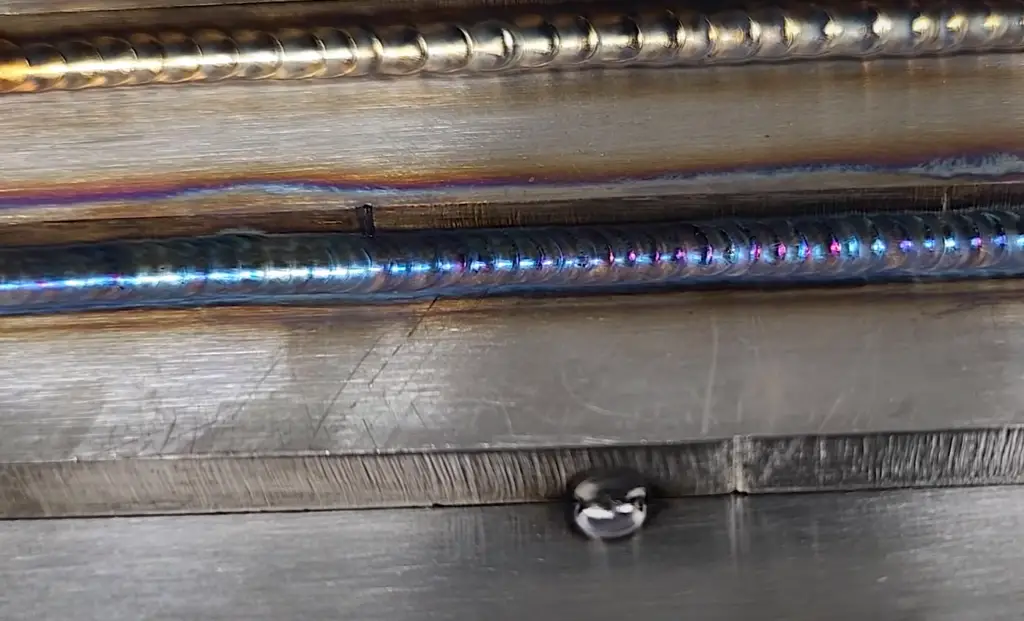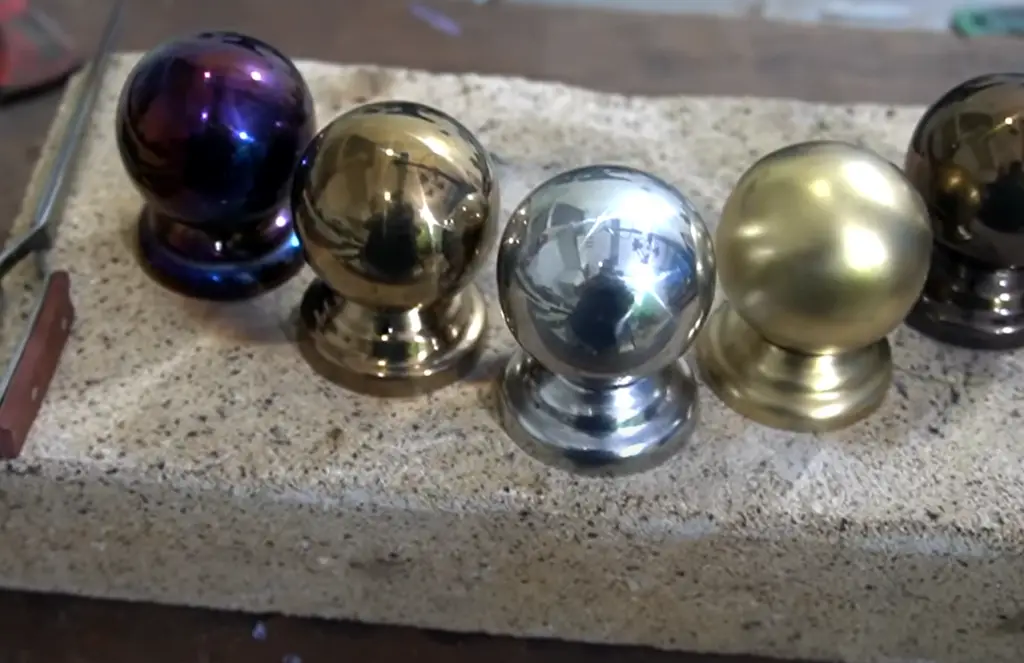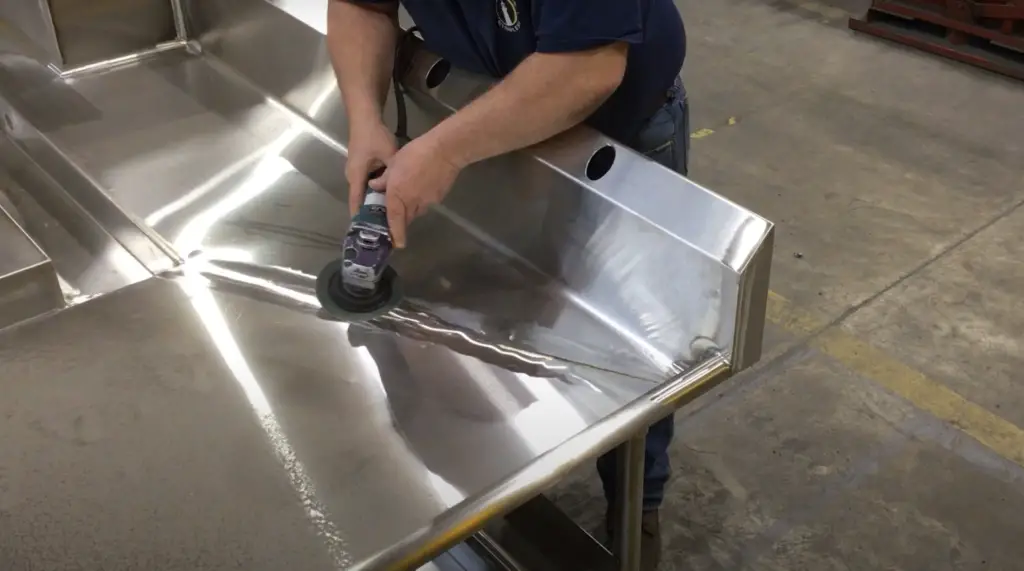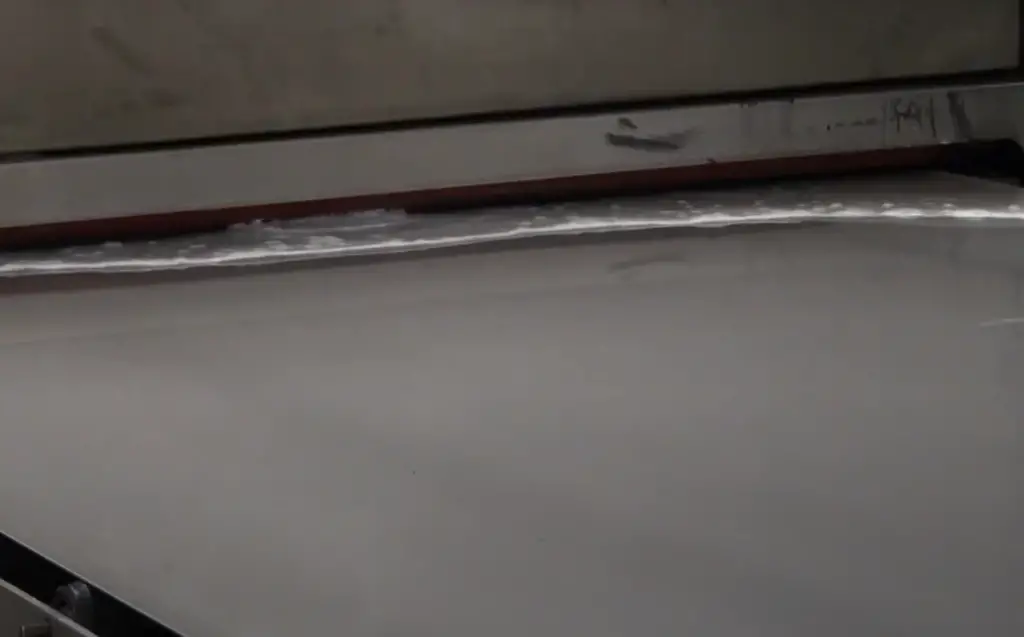Custom 450 stainless steel is a highly versatile and exceptional type of stainless steel renowned for its remarkable corrosion resistance, remarkable strength, and exceptional ductility. This martensitic age-hardened metal alloy is frequently utilized in a wide range of applications that demand an optimal combination of toughness, exceptional strength, and outstanding corrosion resistance. It finds extensive use in critical industries such as aerospace, automotive, chemical processing, and more. In the subsequent sections, we will delve even deeper into the fascinating properties, diverse applications, and numerous benefits that Custom steel brings to the table. Get ready to explore the incredible world of this remarkable alloy!
Custom 450 alloy description
Stainless 450 is a branded trade name for a variant of stainless steel that has been carefully developed to have an exceptional balance of corrosion resistance and strength. With its martensitic, age-hardened alloy structure, this steel undergoes a precisely tailored heat treatment process to further enhance its hardness and strength, while maintaining excellent ductility. This means that it can be easily formed into various shapes without the risk of breaking.

One particular feature of the Custom 450 is its exclusive recipe, which includes elements like Chromium, Nickel, and Copper. These elements synergistically contribute to its remarkable resistance to corrosion, ensuring long-lasting performance and durability in challenging environments. Additionally, Custom 450 is distinguished by its more affordable and stable costs when compared to other high-performance materials, making it highly preferred in a variety of different sectors.
Its superior properties and versatility make it a reliable and preferred material in various industrial applications.[1]Chemistry typical
Custom450 alloy typically comprises Chromium (Cr) in the range of 11.0-12.5%, Nickel (Ni) between 5.0-7.0%, Molybdenum (Mo) ranging from 0.75-1.50%, and Copper (Cu) at 1.5-2.5%. The presence of Chromium provides excellent resistance to oxidation and corrosion, making it ideal for applications requiring durability in harsh environments. Nickel contributes to the overall toughness and durability of the alloy, ensuring it can withstand the rigors of various operating conditions.In addition, Molybdenum boosts the strength of the alloy, further improving its mechanical properties and enabling it to handle high-stress applications. The Copper content provides superior durability against various types of stress including spallation and crevice rust. This unique blend of elements, combined with the primarily Iron (Fe) composition and trace amounts of other elements, gives Stainless steel 450 its distinctive properties, making it a versatile and reliable choice for a broad spectrum of demanding applications.[2]
Physical properties
450 steel is characterized by its excellent physical properties. With a density of 7.8 g/cm³ and a melting point of around 1440-1480°C, it displays remarkable thermal stability.This alloy shows a high degree of hardness with 32-36 Rockwell units in the tempered state.
Custom 450® also exhibits excellent ductility, with a yield strength of 690 MPa, which signifies its ability to deform under stress without breaking. These physical properties, combined with its impressive corrosion resistance, make Custom 450 a versatile material for various high-strength applications.[3]Mechanical properties at room temperature
At room temperatures, Custom 450 exhibits remarkable mechanical properties. It provides excellent breaking power, which means the maximal load that the material can withstand before it tears. The ultimate strength of this material typically ranges from 760 MPa to 895 MPa. It also displays an impressive yield point, i.e. the stress at an average of 690 MPa at which the material begins to plastically deform. This indicates the material’s resistance to deform permanently when subjected to high pressures. Furthermore, it has a high degree of hardness as indicated by a Rockwell C hardness of 32-36 when in the annealed condition, suggesting its ability to resist wear and tear, indentation, and scratching.

The elongation at break is generally around 15%, demonstrating the material’s substantial ductility even at room temperature. These properties make 450 steel suitable for applications where high strength, durability, and resistance to wear are required.[2]
Annealed typical
Custom 450® stainless steel displays outstanding characteristics when subjected to the annealing process. Annealing, a heat treatment process, is utilized to increase the ductility and reduce the hardness of the material, making it more workable and less prone to cracking during machining. After the annealing process, Custom 450 typically presents a Rockwell C hardness between 32-36, indicating a substantial decrease in hardness and increase in ductility compared to its unannealed state. It is this process that lends the alloy its remarkable formability, making it easier to be configured into different shapes and sizes for diverse industry applications. The annealed state of Custom 450 stainless steel is crucial for industries that require the alloy to have a fine balance between strength, ductility, and resistance to wear and tear.
Tempered
450 stainless steel also exhibits exceptional properties when tempered. Tempering is a heat treatment technique used to improve the hardness and toughness of the material, and is often performed after hardening to reduce brittleness. When Custom 450 is tempered, it achieves an excellent balance of strength, ductility, and toughness, making it even more suitable for high-stress applications. The specific properties of the tempered state can vary depending on the specific tempering temperature and time, allowing further customization of the material’s properties to suit specific application requirements. This tempering process further enhances the versatility and applicability of Custom 450 steel in various industry contexts.
Additional properties
Steel 450 presents additional features that contribute to its wide range of applications. For instance, it showcases exceptional weldability, enabling it to be seamlessly integrated into larger structures without compromising its strength or corrosion resistance. Additionally, it has a good level of machinability, allowing it to be easily shaped into specific forms without excessive wear on the machining tools. This alloy also exhibits excellent formability, making it suitable for bending into various shapes without the risk of fracturing. Furthermore, its unique blend of elements ensures a low rate of thermal expansion and excellent conductivity, which are crucial for applications requiring stability in varying temperatures. These additional properties amplify the versatility of Custom 450 stainless steel, making it a highly sought-after material in a plethora of industries.[4]
Corrosion resistance
One of the most notable features of Custom 450 stainless steel is its superb corrosion resistance. The alloy’s unique blend of elements, particularly the presence of Chromium, Nickel, and Copper, contributes to its ability to resist oxidation and various types of corrosion. This makes it particularly resistant to environments that are acidic, saline, or corrosive in nature. This corrosion resistance extends the life of the material, reducing the need for frequent maintenance or replacement, and making it a cost-effective choice for applications in harsh environments. Its ability to resist pitting and crevice corrosion, two of the most prevalent types of corrosion that affect metals, sets it apart from many other stainless steel grades. The robust corrosion resistance of Custom 450 is a significant factor in its selection for applications in industries such as oil and gas, marine, chemical processing, and food and beverage production.
Standard wire finishes
Custom 450 stainless steel can be finished in a variety of ways to meet the specific requirements of different applications. The standard wire finishes for this material usually include bright or matte. The bright finish, achieved using mechanical polishing, offers a shiny, visually appealing surface that is commonly used in decorative or aesthetic applications. The matte finish, on the other hand, is achieved by acid pickling or abrasive blasting and results in a duller, non-reflective surface. This is often preferred in industrial applications where aesthetics are less important but surface roughness may aid in enhancing the performance of the material, such as increasing adhesion in bonding applications.

The choice between a bright and matte finish depends largely on the specific application and end-user preference. It’s worth noting that regardless of the finish chosen, 450 stainless steel maintains its excellent properties such as high strength, superior ductility, and outstanding corrosion resistance.
Forms
Alloy 450 is available in a plethora of forms to accommodate the varied needs of many industries. Some of the most common forms include plate, bar, wire, and tube. The plate form is often used in construction and structural applications, whereas the bar form is typically used in machining and manufacturing processes. The wire form, with its excellent ductility and tensile strength, is desirable in applications that require a high degree of formability, while the tube form is extensively used in fluid transport systems. The diversity in forms makes 450 steel a versatile material, adaptable to a myriad of applications and industries. Its exceptional properties remain intact regardless of the form, ensuring high performance and long-lasting durability.
Welding
Welding Custom 450 is generally straightforward due to its excellent weldability. It can be effectively joined using most common welding methods such as shielded metal arc welding (SMAW), gas tungsten arc welding (GTAW), and gas metal arc welding (GMAW). Preheating is typically not required under normal conditions, although it may be necessary for thicker sections or when dealing with complex shapes. It’s worth noting that the alloy’s unique composition results in a weld metal that matches the base metal’s corrosion resistance and mechanical properties, thereby ensuring the integrity of the welded structures. Post-weld heat treatment is also not usually required, making the process convenient and efficient.
In summary, the excellent weldability of Custom 450 stainless steel further enhances its versatility and suitability for a wide array of industrial applications.Applications
Custom 450 steel’s unique properties and characteristics make it an ideal choice for a wide range of applications across diverse industries. In the oil and gas industry, it is used in the manufacturing of valves, pumps, and connectors due to its excellent strength and corrosion resistance. The marine industry finds its high resistance to saline and corrosive environments beneficial for boat and ship components. In the food and beverage industry, its non-reactivity and durability make it a preferred material for processing equipment and storage tanks. Its exceptional formability and weldability have also led to its use in the construction industry for structural and architectural elements. Moreover, the aerospace industry employs this alloy in the production of parts that demand superior strength, resistance to varying temperatures, and lightness. In summary, the wide-ranging application of Custom 450® stainless steel can be attributed to its impressive blend of strength, corrosion resistance, and versatility.
FAQ
What is 450 stainless steel?
Custom 450, also known as UNS S45000, is a type of precipitation-hardening martensitic stainless steel. It possesses a unique blend of properties that includes high strength, superior ductility, and outstanding corrosion resistance.

These properties are due to its distinctive elemental composition, which includes notable amounts of chromium, nickel, and copper.
What is equivalent to SS 450?
While there may not be a direct equivalent to SS 450, it is comparable to other martensitic stainless steels or precipitation-hardening stainless steels in terms of the general properties. Grades such as 17-4PH or 15-5PH stainless steel might be considered close in terms of performance and functionality, though the specific properties can vary depending on the exact composition and treatment process.
Which stainless steel category is best?
The “best” category of stainless steel largely depends on the specific application at hand. Austenitic stainless steels like types 304 and 316 are known for their superior corrosion resistance and versatility, making them suitable for a wide array of applications. On the other hand, martensitic stainless steels, such as Custom 450, are known for their high strength and hardness, making them ideal for applications requiring durability and impact resistance.
What is the highest grade of stainless steel?
In terms of purity, the highest grade of stainless steel is type 904L, also known as UNS N08904. It is a super austenitic stainless steel with a high level of nickel and chromium content, which gives it superior resistance to corrosion, especially pitting and crevice corrosion.
What is the strongest stainless steel grade?
From a standpoint of yield strength, the strongest stainless steel grade is typically a precipitation-hardening grade like 17-4PH or Custom 450. These alloys can reach yield strengths up to 1,000 MPa or higher, depending on the heat treatment used. However, it’s important to note that strength alone isn’t the only factor to consider when choosing a stainless steel grade; factors such as corrosion resistance, formability, and weldability are also crucial depending on the application.
Useful Video: Stainless Steel Custom 450, For Corrosive Environments: AMS 5673, AMS 5773, AMS 5859, & AMS 5863
Conclusion
Custom 450 stainless steel is more than just an exceptional example of precipitation-hardening martensitic stainless steel. Its distinctive blend of properties — high strength, excellent ductility, and superior corrosion resistance — makes it a truly versatile and adaptable material for a myriad of applications and industries. Whether it’s used in aerospace engineering, automotive manufacturing, or medical devices, Custom 450 stainless steel stands out for its remarkable performance and longevity.
While there may be comparable grades in terms of general properties, Custom 450 offers specific advantages that set it apart. Its strength is on par with some of the strongest stainless steel grades available, ensuring reliable and robust performance in demanding environments. However, the choice of the ‘best’ or ‘highest’ grade of stainless steel ultimately depends on the unique requirements of each application.
What truly sets Custom 450 stainless steel apart is the unique amalgamation of strength, corrosion resistance, and versatility it offers. Its exceptional combination of properties positions it as a significant player in the realm of stainless steels, making it a preferred choice for engineers and designers looking for a material that can withstand the test of time and deliver exceptional performance in any application.
References:
- https://www.carpentertechnology.com/alloy-finder/custom-450
- https://www.ulbrich.com/alloys/custom-450-uns-s45000/
- https://www.techsteel.net/alloy/stainless-steel/custom-450
- https://www.suppliersonline.com/propertypages/Alloy450.asp






